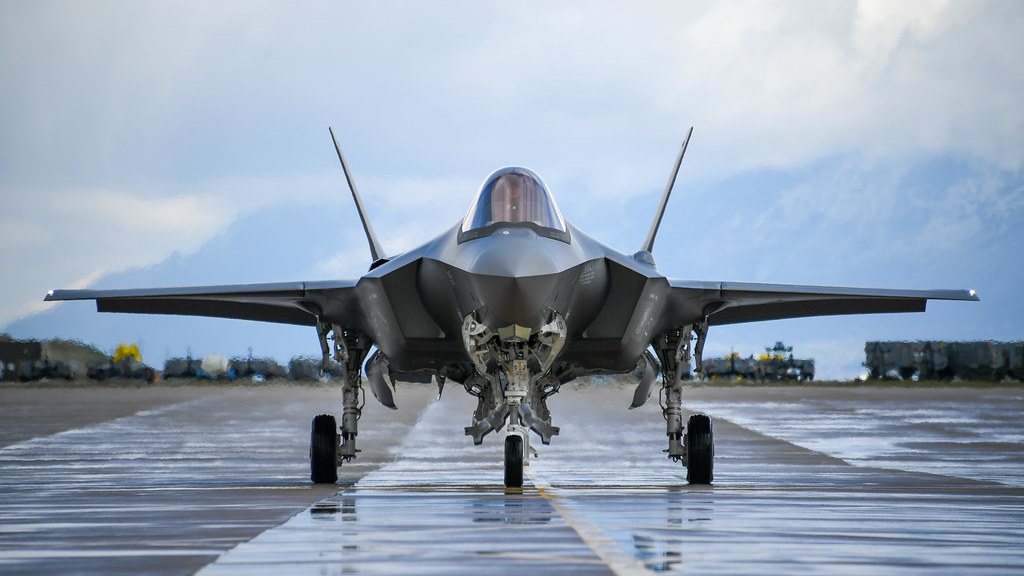
The potential sale of F-35s to Taiwan presents both strategic risks and opportunities for the Pentagon and the Chinese Communist Party. While it may provoke concerns, the underlying rationale behind this proposition is difficult to refute.
Although the sale of F-35s to Taiwan has yet to receive Congressional approval, several crucial U.S. allies, including Poland, Germany, Finland, and Switzerland, have swiftly integrated this aircraft into their military fleets. The F-35’s reputation is rapidly growing, with an expanding international community of partners viewing it as the preferred choice for a 5th-generation stealth fighter. Its presence in the Pacific region could serve as a formidable deterrent.
Considering the undeniable advantages offered by 5th-generation air superiority, it is logical for Taiwan to join the ranks of Singapore, Japan, Australia, and South Korea in operating F-35s. This move has the potential to shift the balance of power against China. The desire to acquire these jets is evident in Taiwan, as highlighted in a 2018 report from The Diplomat, which quotes Taiwanese leaders expressing their interest.
China’s People’s Liberation Army-Navy (PLAN) has demonstrated its strength by boasting a naval force larger than the U.S. Navy for several years. Additionally, it continues to expand its arsenal with new carriers, advanced destroyers, and submarines. This poses an increased threat to Taiwan, but the F-35 could serve as an effective countermeasure, particularly since China does not possess any ocean-launched 5th-generation aircraft.
Despite China’s formidable high-tech Navy, extensive ballistic missile capabilities, and significant ground forces, it appears to fall short in terms of deploying 5th-generation air power on a large scale—a domain where the U.S. and its allies excel.
While China’s J-20 is an impressive land-based aircraft, the development of the carrier-launched J-31 stealth fighter jet by the PLAN remains uncertain in terms of its advancement and the potential production numbers that could make a substantial difference.
Taiwan faces a looming threat in the form of China’s J-20 fighter jets, stationed just 100 miles away along the Chinese coast. However, it appears unlikely that China possesses the necessary 5th-generation air superiority to support a successful amphibious assault on Taiwan. The introduction of F-35s, whether land-based or sea-launched, could significantly tilt the balance in favor of Taiwan, providing the crucial advantage required to repel any Chinese amphibious offensive.
Conversely, it seems more plausible that U.S. and allied 5th-generation aircraft have the capability to outmaneuver and neutralize any Chinese air presence, effectively decimating an attacking amphibious force from China. The recent significant acquisition of F-35s by Japan, South Korea’s existing partnership with the F-35 program, and the U.S. Navy’s unwavering commitment to maintaining a “forward presence” in the Pacific theater all highlight the likelihood that the U.S. and its Southeast Asian allies possess the necessary 5th-generation air superiority to surpass China in aerial combat.
The Pentagon has been steadily increasing the U.S. Navy’s presence in the Pacific region for several years as part of the strategic Pacific Pivot initiative. This development ensures a consistent deployment of Carrier Strike Groups to the Pacific theater, including readiness exercises such as “dual carrier” training operations. Furthermore, the presence of a substantial fleet of large amphibious assault ships, capable of carrying up to 13 F-35Bs, indicates the ability to strategically position 5th-generation air power in numbers that could potentially change the game and secure air superiority in the event of a confrontation with China.
The Pentagon’s hesitance in deploying F-35s to Taiwan in the face of a potential amphibious assault may be attributed to concerns regarding the security of advanced F-35 technology falling into the wrong hands. While the hesitation is understandable, it may appear inconsistent considering the regular supply of missiles, helicopters, and Abrams tanks to Taiwan by the Pentagon. Notably, the Abrams tanks could play a vital role in thwarting a Chinese amphibious landing and preventing the People’s Liberation Army (PLA) from establishing a foothold on the mainland.
However, it is crucial to recognize that the F-35 is no ordinary military equipment. It symbolizes Western military prowess and its introduction to Taiwan could be perceived by China as a direct challenge, potentially leading to an escalation of tensions in the region.
Despite the inherent risks associated with deploying F-35s to Taiwan, their presence could serve as a formidable deterrent. The inclusion of these advanced fighter jets might compel Beijing to reconsider any aggressive actions towards Taiwan, knowing that they would face a highly capable and technologically advanced defense force.




